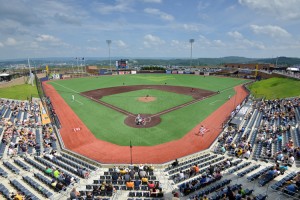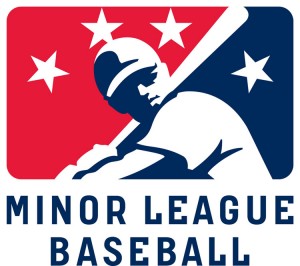Baseball Down on the Farm
May 1, 2018
Each year, spring brings baseball (if not necessarily warm weather) to the United States and Canada. As the big-city teams of Major League Baseball (MLB) steal the headlines, hundreds of other teams of Minor League Baseball (MiLB) also get going, bringing home runs and double plays to smaller cities and communities from coast to coast. Minor league clubs—where players are developed to play in the majors (MLB)—are often referred to as farm teams, and each minor league organization is often called a farm system. Former MLB executive Branch Rickey is credited with formalizing the farm system, where minor league teams were “growing players down on the farm like corn.”
MiLB includes hundreds of teams in numerous baseball leagues in the United States, Canada, Mexico, and the Dominican Republic. The term Minor League Baseball also refers generally to all professional baseball beneath the MLB level, and includes leagues in Australia, Puerto Rico, and Venezuela. Created in 1901, MiLB is commonly referred to as the minors.
Most MiLB teams are affiliated with parent clubs in Major League Baseball. MLB parent clubs are the top teams within an organization. Minor league teams act as feeder clubs where players improve their skills and move up through the different tiers of the minor league system, with the ultimate goal of playing for the parent club. There are also numerous independent minor leagues unaffiliated with Major League Baseball. Minor league levels have varied over the years. Today, the levels from bottom to top are Rookie, Short-Season A, A, Advanced A, Double-A, and Triple-A. The number of minor league teams within an MLB organization often changes, as do the team locations. Players rarely play at every level of an organization. Players good enough to reach the parent club will skip levels along the way. Most players never get above the lower minor league classes.

Monongalia County Ballpark is home to the West Virginia Black Bears, a team that competes in the Short-Season A NY-Penn League. This photo shows a game between the Black Bears and the Mahoning Valley (Ohio) Scrappers on June 21, 2015. Credit: © Aspen Photo/Shutterstock
MiLB seasons vary according to league level and team location. The highest MiLB classes have seasons similar to MLB, operating from April to September. This schedule allows players to be in compatible shape to shift between the upper minors and the majors. Lower minor leagues operate on shorter schedules, often according to the climate of the league’s location. For example, leagues in the Caribbean Islands, Mexico, and Venezuela often have multiple short seasons and operate the year around. Some leagues are limited to specific seasons, such as the Arizona Fall League and the Venezuelan Winter League. The Australian Baseball League operates during Australia’s summer, which runs from December through February. Each minor league has its own playoffs and championship at the end the regular season. As of 2018, there were more than 250 teams competing in 18 MiLB leagues.
Minor league team names are often rather creative. Toledo (Ohio) first acquired a team called the Mud Hens in 1896. The Mud Hens’ Triple-A International League rivals include Pennsylvania’s Lehigh Valley IronPigs and Scranton/Wilkes-Barre RailRiders. Other inventive names include the Akron (Ohio) RubberDucks, Batavia (New York) Muckdogs, El Paso (Texas) Chihuahuas, Hartford (Connecticut) Yard Goats, Lansing (Michigan) Lugnuts, Modesto (California) Nuts, Montgomery (Alabama) Biscuits, and Vermont Lake Monsters.



